I have app which set multiple routes on the map. The problem is when I put two points in the map, he get the suggested routes but with one extra straight line.
I found a solution. I just get the main tag for polyline - overview_polyline
In the code are the new changes :)
pic multiple routes - alternatives=true - I set just one road

pic - if I set alternatives=false in xml link, the straight line disappears.

In the xml everything is fine.
I looked in to the 2 xml files with alternatives=false and alternatives=true but there are identical.

Thanks in advance.
this code display the information:
//Polyline
private class GetRouteTask extends AsyncTask<String, Void, String> {
String response = "";
@Override
protected String doInBackground(String... urls) {
//Get All Route values
v2GetRouteDirection = new GMapV2Direction();
document = v2GetRouteDirection.getDocument(latLngFrom, latLngTo, GMapV2Direction.MODE_DRIVING);
response = "Success";
return response;
}
@Override
protected void onPostExecute(String result) {
if(document != null){
ArrayList<LatLng> directionPoint = v2GetRouteDirection.getDirection(document);
PolylineOptions rectLine = new PolylineOptions().width(3).color(Color.RED);
for (int i = 0; i < directionPoint.size(); i++) {
rectLine.add(directionPoint.get(i));
}
// Adding route on the map
map.addPolyline(rectLine);
}
}
}
this code get the tag information:
public class GMapV2Direction {
public GMapV2Direction(){}
public final static String MODE_DRIVING = "driving";
public final static String MODE_WALKING = "walking";
public static String error = null;
public Document getDocument(LatLng start, LatLng end, String mode) {
String url = "http://maps.googleapis.com/maps/api/directions/xml?"
+ "origin=" + start.latitude + "," + start.longitude
+ "&destination=" + end.latitude + "," + end.longitude
+ "&sensor=false&units=metric&mode=driving&alternatives=true";
////////////////
//Set TimeOuts
HttpParams httpParameters = new BasicHttpParams();
// Set the timeout in milliseconds until a connection is established.
// The default value is zero, that means the timeout is not used.
int timeoutConnection = 3000;
HttpConnectionParams.setConnectionTimeout(httpParameters, timeoutConnection);
// Set the default socket timeout (SO_TIMEOUT)
// in milliseconds which is the timeout for waiting for data.
int timeoutSocket = 5000;
HttpConnectionParams.setSoTimeout(httpParameters, timeoutSocket);
try {
HttpClient httpClient = new DefaultHttpClient(httpParameters);
HttpContext localContext = new BasicHttpContext();
HttpGet httpGet = new HttpGet(url);
HttpResponse response = httpClient.execute(httpGet, localContext);
InputStream in = response.getEntity().getContent();
DocumentBuilder builder = DocumentBuilderFactory.newInstance().newDocumentBuilder();
Document doc = builder.parse(in);
return doc;
}
catch (ClientProtocolException e) {
error = "some";
e.printStackTrace();
} catch (IOException e) {
error = "some";
e.printStackTrace();
}
catch (Exception e) {
error = "some";
e.printStackTrace();
}
return null;
}
public ArrayList<LatLng> getDirection (Document doc) {
NodeList error = doc.getElementsByTagName("status");
int p;
Node error1 = null;
//взема последнич елемент на таг
for(p = 0;p<error.getLength();p++){
error1 = error.item(p);
}
if(p==p){
p--;
}
LatLng latLngZero = new LatLng(0.0, 0.0);
ArrayList<LatLng> list = new ArrayList<LatLng>();
list.add(latLngZero);
ArrayList<LatLng> listGeopoints = null;
if(error1.getFirstChild().getTextContent().equals("OK")) {
//new
NodeList routeTag,nl3;
listGeopoints = new ArrayList<LatLng>();
//get tag route
routeTag = doc.getElementsByTagName("route");
if (routeTag.getLength() > 0) {
//get first eelemnt of route
Element routeElement = (Element) routeTag.item(0);
//get tag overview_polyline
NodeList polylineList = routeElement.getElementsByTagName("overview_polyline");
Node node1 = polylineList.item(0);
nl3 = node1.getChildNodes();
Node latNode = nl3.item(getNodeIndex(nl3, "points"));
List<LatLng> arr = decodePoly(latNode.getTextContent());
for (int j = 0; j < arr.size(); j++) {
listGeopoints.add(new LatLng(arr.get(j).latitude, arr.get(j).longitude));
}
}
}
//////////////
else{
return list;
}
return listGeopoints;
}
private int getNodeIndex(NodeList nl, String nodename) {
for(int i = 0 ; i < nl.getLength() ; i++) {
if(nl.item(i).getNodeName().equals(nodename))
return i;
}
return -1;
}
private ArrayList<LatLng> decodePoly(String encoded) {
ArrayList<LatLng> poly = new ArrayList<LatLng>();
int index = 0, len = encoded.length();
int lat = 0, lng = 0;
while (index < len) {
int b, shift = 0, result = 0;
do {
b = encoded.charAt(index++) - 63;
result |= (b & 0x1f) << shift;
shift += 5;
} while (b >= 0x20);
int dlat = ((result & 1) != 0 ? ~(result >> 1) : (result >> 1));
lat += dlat;
shift = 0;
result = 0;
do {
b = encoded.charAt(index++) - 63;
result |= (b & 0x1f) << shift;
shift += 5;
} while (b >= 0x20);
int dlng = ((result & 1) != 0 ? ~(result >> 1) : (result >> 1));
lng += dlng;
LatLng position = new LatLng((double) lat / 1E5, (double) lng / 1E5);
poly.add(position);
}
return poly;
}
}